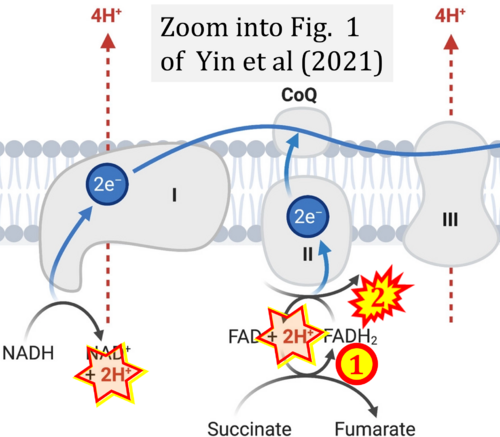Yin 2021 FASEB J
| Yin M, O'Neill LAJ (2021) The role of the electron transport chain in immunity. FASEB J 35:e21974. https://doi.org/10.1096/fj.202101161R |
Yin M, O'Neill LAJ (2021) FASEB J
Abstract: The electron transport chain (ETC) couples oxidative phosphorylation (OXPHOS) with ATP synthase to drive the generation of ATP. In immune cells, research surrounding the ETC has drifted away from bioenergetics since the discovery of cytochrome c (Cyt c) release as a signal for programmed cell death. Complex I has been shown to generate reactive oxygen species (ROS), with key roles identified in inflammatory macrophages and T helper 17 cells (TH 17) cells. Complex II is the site of reverse electron transport (RET) in inflammatory macrophages and is also responsible for regulating fumarate levels linking to epigenetic changes. Complex III also produces ROS which activate hypoxia-inducible factor 1-alpha (HIF-1α) and can participate in regulatory T cell (Treg ) function. Complex IV is required for T cell activation and differentiation and the proper development of Treg subsets. Complex V is required for TH 17 differentiation and can be expressed on the surface of tumor cells where it is recognized by anti-tumor T and NK cells. In this review, we summarize these findings and speculate on the therapeutic potential of targeting the ETC as an anti-inflammatory strategy.
Correction: FADH2 and Complex II
- FADH2 is shown as the substrate feeding electrons into Complex II (CII). This is wrong and requires correction - for details see Gnaiger (2024).
- Gnaiger E (2024) Complex II ambiguities ― FADH2 in the electron transfer system. J Biol Chem 300:105470. https://doi.org/10.1016/j.jbc.2023.105470 - »Bioblast link«


